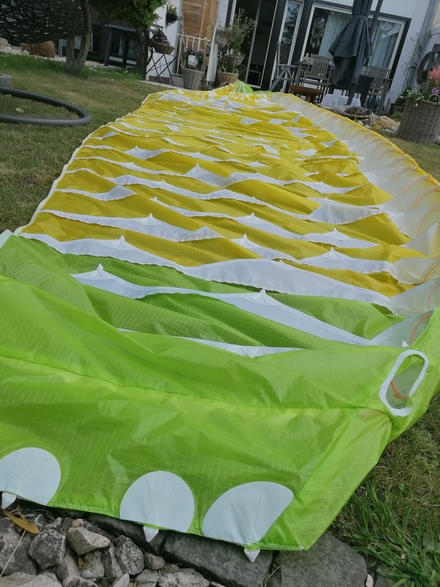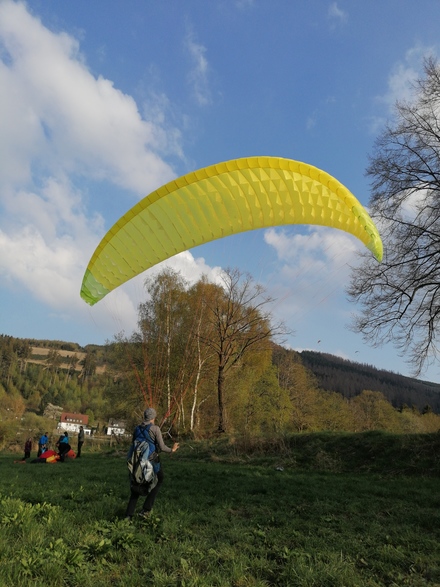
[en] [de] [fr]
BHL5-16 "LIMETTI"
BARRETINA HYPER LITE 5
Figure 1.
BHL5-16 "Limetti"
1. DESCRIPTION
BHL5-16 SA is the BHL5 single skin prototype made by Tim Weber in Sauerland, Germany. Completed in April-May 2022.
" Here are a few more information about my proto from the BHL5.
I used Skytex 27/g m2 for the cells and triple kite ripstop 51g/m2 for the ribs.
The Lines are Liros DC (Dyneema coated) 60 for the upper gallery 160 middle gallery 200 for the main lines.
2,4 mm nylon rods from the garden strore for weedeater
10mm wide belts for the line attachment points .
The line attachment points are reinforced with self adhesive cordura 170g/m2.
The yarn is Serafil S80 and i used almost 1500m of it
My versoin of the proto has the name - LIMETTI -
Without lines it weights 1605 g and with the lines 1850g
The trailing edge is reinforced with 65g/m2 25mm wide ripstop and the leading edge is reinforced with 1mm aramide chord."
BARRETINA HYPER LITE 5
 |
 |
1. DESCRIPTION
BHL5-16 SA is the BHL5 single skin prototype made by Tim Weber in Sauerland, Germany. Completed in April-May 2022.
" Here are a few more information about my proto from the BHL5.
I used Skytex 27/g m2 for the cells and triple kite ripstop 51g/m2 for the ribs.
The Lines are Liros DC (Dyneema coated) 60 for the upper gallery 160 middle gallery 200 for the main lines.
2,4 mm nylon rods from the garden strore for weedeater
10mm wide belts for the line attachment points .
The line attachment points are reinforced with self adhesive cordura 170g/m2.
The yarn is Serafil S80 and i used almost 1500m of it
My versoin of the proto has the name - LIMETTI -
Without lines it weights 1605 g and with the lines 1850g
The trailing edge is reinforced with 65g/m2 25mm wide ripstop and the leading edge is reinforced with 1mm aramide chord."